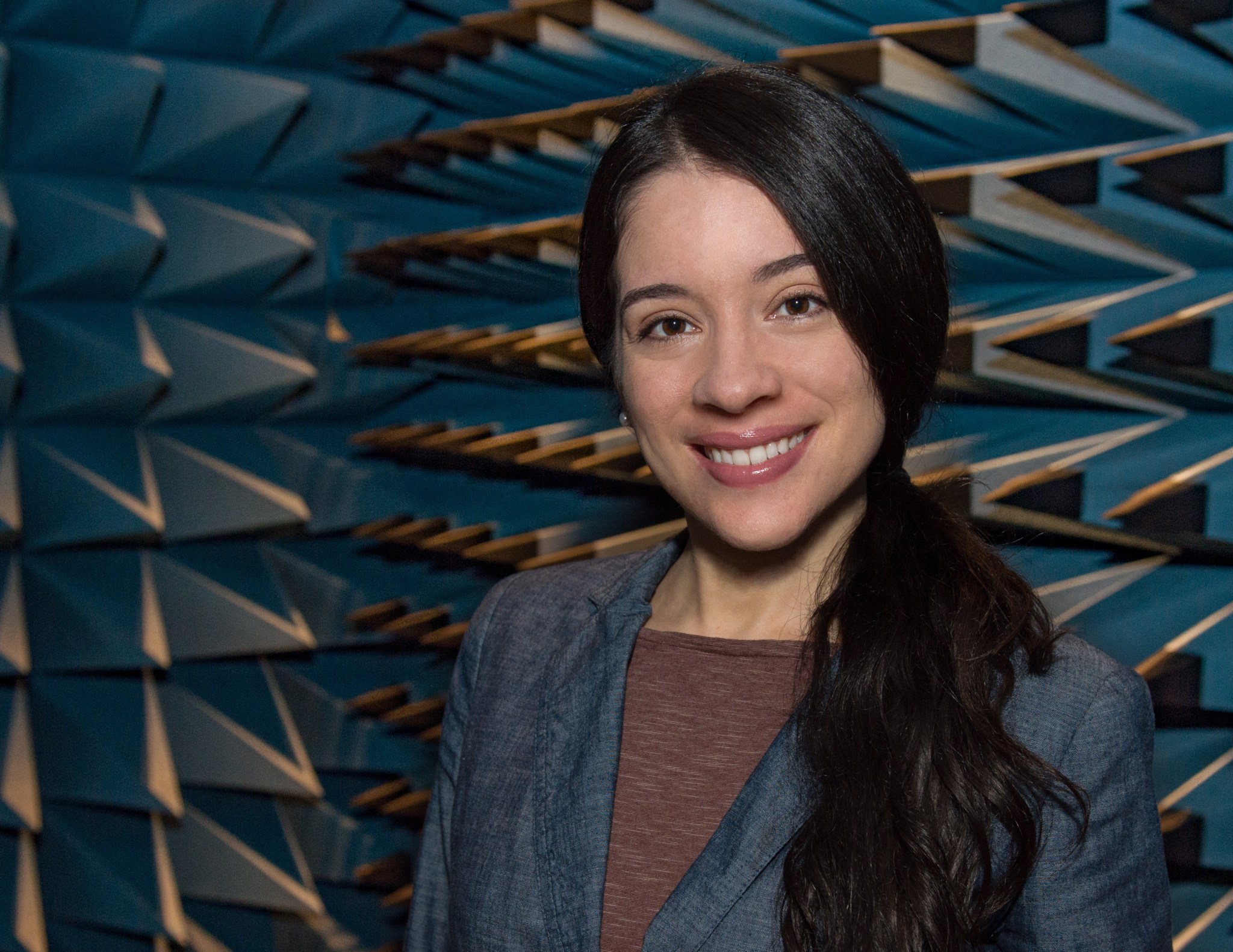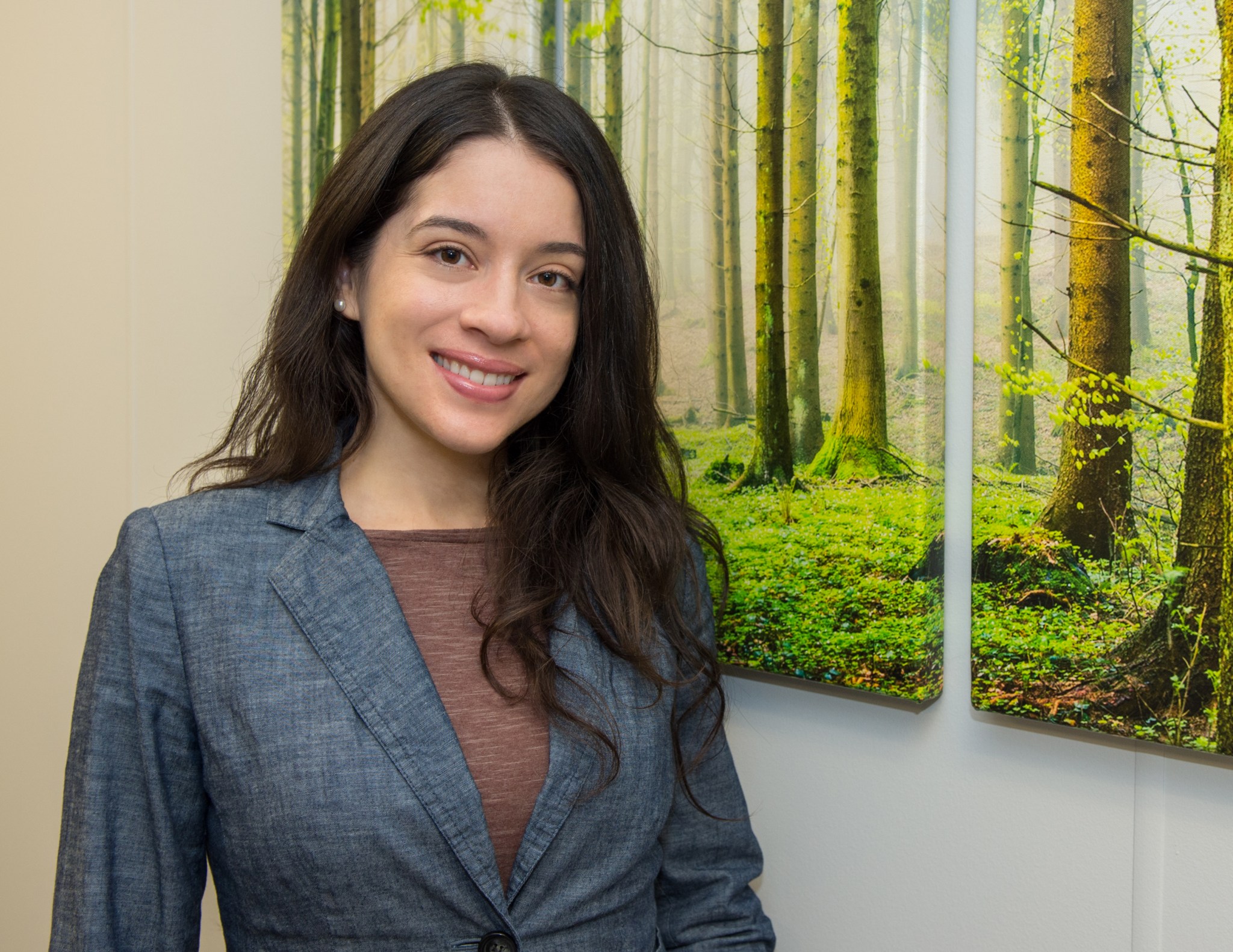Name: Shannon Rodríguez
Title: Branch Head, Flight Microwave and Telecommunications Systems Branch
Formal Job Classification: Supervisory Electrical Engineer
Organization: Code 567, Electrical Engineering Division, Applied Engineering and Technology Directorate
What do you do and what is most interesting about your role here at Goddard? How do you help support Goddard’s mission?
I am the branch head for the group that builds communications systems for satellites. The communications system is the umbilical cord between the spacecraft and the ground, and is the only way we can communicate with the satellite. We send the satellite commands such as to change location, to turn instruments or systems on or off, and to turn the thrusters on or off. Any command that goes to the spacecraft must go through our communication system. Also, any information we receive from the spacecraft goes through our communication system. All information about the satellite’s health and all science information are relayed through the communication system.
Do you work with Goddard’s existing communications networks?
We work closely with Goddard’s Space Network (SN) and Near-Earth Network (NEN) to design a communication’s system that best fits the needs of a particular mission. We consider the satellite’s orbit, distance from Earth, data rate requirements and other aspects unique to each mission.
How do you make sure that a particular spacecraft responds to your commands and not another spacecraft?
Each spacecraft is assigned a unique frequency within the available frequency band and a particular spacecraft identification, which is embedded in the data to and from each spacecraft. There are specialists who work on assigning frequencies to missions, but not in my branch. Basically, each spacecraft essentially has its own frequency.
What is your supervisory style?
I lead my team of about 25 to 30 people to design components and systems to meet the mission communications requirements. I like to be involved in technical decisions. People are always in my office and I like working hand in hand with my team.
Engineers can be very abstract, so I also sometimes see my role as translating what engineers say into what they really meant to say so non-engineers and spacecraft management can understand.
I have a lot of energy. I consider myself a “doer” so I need to finish things to feel accomplished and I am also extremely patient. I envisioned a certain picture for our branch and worked many years to see this vision become reality.
Are you still doing technical work?
Technical work keeps me sane! I love doing technical work!
Currently I am part of the communications team for the Wide Field Infrared Survey Telescope (WFIRST) mission, NASA’s next big astrophysics telescope after the James Webb Space Telescope. What is most exciting for myself and my branch is that we are going to use a transmitter developed in my branch, which represents about five years of technology development. It is one of my babies.
I have been blessed to have bosses who have let me continue doing technical work while managing others. I became a supervisor and associate branch head when I was very young. Doing technical work keeps me sharp in the technical area that I lead and allows me be mentored by the same people whom I lead.
What is the most important thing one of your mentors ever said to you?
I have had several leadership and technical mentors. One of my leadership mentors saw things in me that I did not yet see myself and pushed me to do things that he knew that I could do before I knew myself. One of my technical mentors helped me with technical writing and stressed the importance of being meticulous and the importance of well-written documents and communications.
What do you tell the people you mentor?
I informally mentor several engineers. I tell them not to limit themselves with self-imposed mental barriers. I tell them to take things one step at a time.
Are you involved with any of Goddard’s advisory committees?
For a long time, I co-led the New Employee Welcoming Board that became the New and Developing Professionals Advisory Committee. Although I no longer lead this group, I remain a part of the group.
We are the center’s voice for new Goddard employees. We address things that need to happen to make new employees feel welcome and included. We work with human resources people to sort through any problems and improve our employees’ transition to Goddard. We also have inclusive activities such as networking breakfasts with the new employees and our management.
What is your educational background?
I have an electrical engineering bachelor’s degree from the University of Puerto Rico, Mayagüez campus, where I am from, and a master’s in electrical engineering from Johns Hopkins University.
Why did you become an electrical engineer?
I was good in math and science. My high school counselor said that I should be an engineer or a doctor. I did not like biology, so I became an engineer. Electrical engineering had the hardest admission requirements. I figured that if I could get into electrical engineering and found that I did not like it, then it would be easier to switch to another kind of engineering or something else in science. I am very practical.
How did you come to work at Goddard?
I started as a summer intern in 2003 in the Microwave Instruments Technology Branch. After that summer, the branch offered me a job to start after college graduation in 2004. After five years in that branch, I moved to my current branch as the associate branch head. I have worked in the same building, Building 19, my entire 12 years at Goddard.
What are some of the most prestigious awards you have received?
I received the 2015 Hispanic Engineer National Achievement Awards Conference (HENAAC) Great Minds in STEM Award for Most Promising Engineer or Scientist – Advanced Degree – Master’s. HENAAC recognizes Hispanic role models in engineering, science, technology and math. This is an external award from a panel of academia, government and industry people who review nominations from around the country. I am very grateful to have received this award.
Other awards I have won include the NASA Equal Employment Opportunity Medal, the NASA Group Achievement Award for the Aquarius Radiometer Team, the Robert H. Goddard Exceptional Achievement for Supervision and the Robert H. Goddard Exceptional Achievement for Outreach.
What is your personal catch phrase?
I have both supervisory and technical duties, so I am constantly juggling and prioritizing. When I get a little stressed, I always tell myself, “One thing at a time.” My mother taught me how to do several things at once and has now adopted this catch phrase.
Is there something surprising about you that people do not generally know?
I started playing the violin in second grade. I played in the orchestra in my town in Puerto Rico and in college. I love to play classical music. Sometimes I have played for the Goddard theater group. I also love physical activities including hiking, zumba, weight-lifting and yoga.
What is your “six-word memoir?” A six-word memoir describes something in just six words.
Energetic. Upbeat. Friendly. Joyful. Kind.
By Elizabeth M. Jarrell
NASA’s Goddard Space Flight Center, Greenbelt, Md.

Conversations With Goddard is a collection of Q&A profiles highlighting the breadth and depth of NASA’s Goddard Space Flight Center’s talented and diverse workforce. The Conversations have been published twice a month on average since May 2011. Read past editions on Goddard’s “Our People” webpage.






























